Page 177 of 257

165
XIII
A U D I O
CONTROLS AT THE STEERING WHEEL
The controls at the steering wheel give you access to certain functions, without you needing to use the radio-CD control panel.
1VOL +Volume increase
2
Radio source:Short press: Automatic search of higher frequen-cies.CD and CD changer source:Short press: Forward search for tracks.Long press: Fast forward with accelerated sound.
3
Radio source:Scrolling of pre-set stations.CD and MP3 source:Search of the track.CD changer source:Selection of next or previous CD.
4VOL -Volume decrease.
5MuteFirst press: Temporary sound pause.Second press: Restoration of sound.
6MENU
Access to the main menu to activate/deactivate or choose the adjustments for your vehicle.In certain countries, this control is deactivated while the vehicle is moving.
7OK
In a menu, a list, an alphabet:Validation of the function, the element or the value chosen.If your vehicle has the Bluetooth® system: Answer call, end call
8Selection of the next or previous elements of a menu in a screen, a list, an alphabet.
9ESCShort press: Cancellation of the current operation.Long press: Return to the permanent display.
10MODESelection of type of information displayed on the right of the screen and, for screen A, choice of activation/deactivation of functions and adjustments.
11If your vehicle has the Bluetooth® system: Press: Display of the "Directory" menu.
12If your vehicle has the Bluetooth® system:Press: Activation of voice recognition.
Display A
Display C
�T�e�c�h�n�i�c�a�l� �s�p�e�c�i�fi� �c�a�t�i�o�n�s
Your Bluetooth® compatible radio possesses:
- 3 wavebands (MW/LW/FM).
- Dual tuner with RDS EON PTY, display of the PS name, �R�D�S� �p�r�o�g�r�a�m�m�e� �s�e�a�r�c�h�,� �T�A� �t�r�a�f�fi� �c� �i�n�f�o�r�m�a�t�i�o�n�,� �2�4� �p�r�e�-selections (18 FM - 6 MW/LW), automatic memorisation of the AST strongest stations.
- An MP3- compatible CD reader.
- Audio power of 4x35 W.
Page 178 of 257

166
XIII
A U D I O
AUDIO SETTINGS
On/Off
With the key in Drive position M, press on control A to switch the radio on or off.
Note:
- If the radio was on the last time you switched off the ignition, it will resume automatically when you switch on the ignition again. You will not have to press on control A.
- After switching off the ignition, you can still operate the audio system even without the ignition key being present. Simply press on button A. The system will turn itself off after approx. 30 minutes.
Anti-theft system
This radio is coded in such a way as to function only on your particular vehicle. It would be unusable if installed on any other vehicle.
Note:
The anti-theft system is automatic and requires no action on your part.
Selection of source
To select either Radio, CD (CD already inserted and Radio source activated), or CD changer source, press on control D.
When you insert a CD it automatically starts being read.
Note:
When the radio is switched off, the source selected is memorised.
Volume adjustment
Rotate control A to increase or decrease the sound volume.
You can also increase or decrease the volume using buttons 1 and 4 at the steering wheel.
Note:
- The sound volume when you switch off the radio will be the same when you switch it on again.
- The radio sound volume automatically adjusts to the vehicle speed, provided the "volume adjustment" function is activated.
Temporary sound pause
Press on control 5 at the steering wheel to activate this function.
The sound will be paused, regardless of the source selected.
To restore the audio output, press one of the controls at the steering wheel.
Sound adjustments
Each press on button F brings up the parameter to be adjusted: choice of �p�r�e�d�e�fi� �n�e�d� �s�o�u�n�d� �a�m�b�i�a�n�c�e�s�,� �b�a�s�s�,� treble, loudness, fade (front/rear sound distribution), balance (left/right sound distribution) and volume adjusted to vehicle speed.
Press buttons K or N to modify the values for the function displayed.
Note:
- The selection of a sound ambiance automatically adjusts bass and �t�r�e�b�l�e�.� �T�h�e�s�e� �c�a�n� �b�e� �m�o�d�i�fi� �e�d�.
To restore the original adjustments for the musical ambiances, reset bass and treble to zero.
- Adjustment of loudness, as well as bass and treble when they are �a�v�a�i�l�a�b�l�e�,� �a�r�e� �s�p�e�c�i�fi� �c� �t�o� �e�a�c�h� sound source and to each musical ambiance.
- If you leave the audio system un-actioned for a few seconds, it will revert to the normal display.
Page 179 of 257

167
XIII
A U D I O
RADIO SOURCE
Notes on radio reception
Your radio will be subject to certain phenomena that are not encountered by domestic systems.The reception of AM and FM signals may suffer from interference, which is caused by the nature and propagation of the signals and does �n�o�t� �r�e�fl� �e�c�t� �o�n� �t�h�e� �q�u�a�l�i�t�y� �o�f� �y�o�u�r� �r�a�d�i�o� installation.In AM, the reception may be affected when passing under power lines or bridges, or when travelling through tunnels.In FM mode, the reception may be affected by the distance from the �s�t�a�t�i�o�n� �t�r�a�n�s�m�i�t�t�e�r�,� �t�h�e� �r�e�fl� �e�c�t�i�n�g� �o�f� signals off obstacles (mountains, hills, tower blocks) and radio blackspots (no coverage from the station transmitter).
Selection of radio source
Press button D to select the source.
Selection of frequencies and memory banks
Press button E successively to go �t�h�r�o�u�g�h� �t�h�e� �m�e�m�o�r�y� �b�a�n�k�s� �F�M�1�,� �F�M�2� and FM3, for the FM waveband, and the memory banks MW/LW, for the AM waveband.
Manual search
Manual seearch is via buttons Jor M.By keeping button J or M pressed, you will be able to scroll through the waveband. Scrolling will stop as soon as you release the button. The radio will remain tuned to the frequency that is displayed.
Tuning sensitivity
Automatic searches can be carried out according to two levels of sensitivity:- To capture the most powerful transmitters, choose the local search mode "LO" (default option).
- To capture the weakest or most distant transmitters, choose the sensitive search mode "DX".
�S�e�a�r�c�h� �f�o�r� �a� �s�t�a�t�i�o�n� �i�s� �d�o�n�e� �fi� �r�s�t� �i�n� "LO" (local) sensitivity, then in "DX" (distant) sensitivity.To commence a search in sensitivity "DX" (distant) immediately, press twice in succession on one of the buttons K or N.
Automatic search
A short press on one of the buttons K or N will tune into higher or lower radio stations respectively, within the chosen waveband.By keeping button K or N pressed, you will be able to scroll through the waveband. The scrolling will stop �a�t� �t�h�e� �fi� �r�s�t� �s�t�a�t�i�o�n� �i�t� �fi� �n�d�s� �o�n�c�e� �t�h�e� button is released.You can also do this by means of control 2 at the steering wheel.If the automatic search is unable to tune into a known frequency (perhaps owing to very weak reception), it is �p�o�s�s�i�b�l�e� �t�o� �s�e�a�r�c�h� �m�a�n�u�a�l�l�y� �t�o� �fi� �n�d� this station.
Display and selection of a station available in the area in which you are travelling
�B�r�i�e�fl� �y� �p�r�e�s�s� �o�n� �b�u�t�t�o�n� G to bring up a list of stations, this is updated every 10 minutes.You can also update this list at any time by giving a long press on button G.To listen to one of these stations, select by pressing buttons J or Mand validate using button L.
Page 180 of 257

168
XIII
A U D I O
Manual pre-setting
Select the waveband and memory bank required using button E.Select a station using either automatic or manual search.Keep pressing for more than two seconds on one of the pre-selection buttons 1 to 6 on the keypad P.The sound momentarily cuts off, then returns to its previous level to �c�o�n�fi� �r�m� �t�h�a�t� �i�t� �h�a�s� �m�e�m�o�r�i�s�e�d� �t�h�e� station.
Automatic memorisation of transmitters (Autostore function)
In FM, if you hold down button Efor more than two seconds, your radio will automatically memorise the 6 strongest stations on the FM3 memory bank.The display shows "FM AST".The radio memorises the 6 strongest transmitters, deleting the 6 previously memorised.After the memorisation, the radio goes directly to memory 1 of memory bank FM3.
Note:
�-� �I�f� �t�h�e� �t�r�a�f�fi� �c� �i�n�f�o�r�m�a�t�i�o�n� �f�u�n�c�t�i�o�n� has been activated (see RDS SYSTEM), the stations offering this facility will be memorised as priority.
If it is unable to memorise any new stations, the system will retain the previously memorised stations.
�-� �I�f� �t�h�e� �s�y�s�t�e�m� �i�s� �u�n�a�b�l�e� �t�o� �fi� �n�d� �6� �s�t�a�t�i�o�n�s�,� �t�h�e� �u�n�fi� �l�l�e�d� �m�e�m�o�r�y� �s�l�o�t�s� will remain free.
Recall of pre-set stations
Press button E� �b�r�i�e�fl� �y� �t�o� �s�e�l�e�c�t� �t�h�e� required waveband and memory bank.A short press on one the pre-selection buttons 1 to 6 on the keypad P recalls the corresponding memorised station. You can also do this using the control 3 at the steering wheel.If it is a RDS station, the frequency appears some seconds before the name appears.For RDS stations, recall of a station may prompt a search for a frequency corresponding to the region where you happen to be (see RDS system).
Page 181 of 257

169
XIII
A U D I O
RDS SYTEM
Using the RDS (radio data system) function on FM
The majority of FM radio stations use the RDS system. The radio in your vehicle has this system.The RDS system enables these stations to transmit non-audible data in addition to the broadcasting of their programmes. The data provides access to various functions described in this chapter, such as: display of �t�h�e� �s�t�a�t�i�o�n� �n�a�m�e�,� �i�n�t�e�r�m�i�t�t�e�n�t� �t�r�a�f�fi� �c� �i�n�f�o�r�m�a�t�i�o�n� �fl� �a�s�h�e�s� �o�r� �a�u�t�o�m�a�t�i�c� scanning of stations. This enables you to continue listening to your chosen radio station, regardless of the different frequencies it uses in the regions through which you are travelling.
Scanning of RDS stations
Your radio keeps the best possible reception by continuously looking for any other frequencies on which the selected radio station is broadcast, automatically choosing the frequency offering the best reception (if the station broadcasts on more than one transmitter or frequency).
Activation/deactivation of the RDS functions
The RDS functions can be accessed via the following two menus:- Main menu (press button O).
- AUDIO menu (press button L).
To activate/deactivate the RDS functions on the display C:
1. Press button O.
2. Select the AUDIO icon using buttons J or M.
3.� �C�o�n�fi� �r�m� �y�o�u�r� �c�h�o�i�c�e� �w�i�t�h� �a� press on button L.
4. Select the sub-menu for the FM waveband, via buttons J or M. �C�o�n�fi� �r�m� �y�o�u�r� �c�h�o�i�c�e� �w�i�t�h� �a� press on button L.
5. Select scanning for RDS sta-tions, via buttons J or M.
6. Validate your choice with a press on button L.
7. Using control L, select/deselect to activate/deactivate the func-tion.
8. Validate your choice by select-ing "OK" on the display.
To activate/deactivate the RDS functions on the display A:
1. Press button O.
2. Select the AUDIO-CD icon via buttons J or M.
3. Select scanning for RDS sta-tions, via buttons J or M. The system tells you the status (active or inactive) of the func-tion.
4. Modify this status via buttons Kor N.
5. Then please wait for the display to disappear.
Note:
If the RDS function is active:- The "RDS" on the display will light up provided the station being received uses the RDS system with scanning of frequencies.
- The "RDS" on the display is barred if the station received uses the RDS system without frequency search.
If your RDS function is deactivated, the "RDS" on the display will be absent in all cases.The display will indicate the "NAME" for the stations that use the RDS system and the frequency for stations that do not use it.
Page 182 of 257

170
XIII
A U D I O
Regional search mode
Some stations, when they are organised in networks, broadcast regional programmes at certain times of day, and national programmes at other times.It is possible to search:- Either for a regional station only.
- Or across the whole network �i�n� �o�r�d�e�r� �t�o� �fi� �n�d� �a� �d�i�f�f�e�r�e�n�t� programme.
To activate/deactivate this function, proceed as for Scanning of RDS stations.
Note:
When this mode is activated, the system will remain tuned to one �s�p�e�c�i�fi� �c� �r�e�g�i�o�n�a�l� �s�t�a�t�i�o�n�.
�T�A� �t�r�a�f�fi� �c� �i�n�f�o�r�m�a�t�i�o�n� �(�t�r�a�f�fi� �c� announcements)
Some stations allow broadcasting, only in FM, of these messages thanks to the "TA" function.You can activate the "TA" function by pressing on button I. This allows you, even though you are listening to another audio source or to a radio programme not itself providing �t�r�a�f�fi� �c� �m�e�s�s�a�g�e�s�,� �t�o� �r�e�c�e�i�v�e� �t�r�a�f�fi� �c� �i�n�f�o�r�m�a�t�i�o�n� �fl� �a�s�h�e�s� �f�r�o�m� �a�n� �F�M� station which broadcasts them.
While the messages are being broadcast the original source is paused and when the messages have ended your radio will automatically revert to the music programme you were listening to.Note:- You have to be in FM wave band.
- The station being listened to should indicate via the RDS system that it �b�r�o�a�d�c�a�s�t�s� �t�r�a�f�fi� �c� �i�n�f�o�r�m�a�t�i�o�n�.
- Stations organised in a network (EON) have regional transmitters that send their own programmes: while you are listening to one of these stations the system will switch automatically to a station on the network that is broadcasting �t�r�a�f�fi� �c� �i�n�f�o�r�m�a�t�i�o�n�.
- You can stop listening to a message by pressing button I.
Sound volume adjustment for �t�r�a�f�fi� �c� �i�n�f�o�r�m�a�t�i�o�n
�T�h�e� �s�o�u�n�d� �v�o�l�u�m�e� �f�o�r� �t�r�a�f�fi� �c� information operates separately from that for the rest of the system, and can be adjusted independently.Rotate button A� �w�h�i�l�e� �a� �t�r�a�f�fi� �c� information message is being broadcast.This volume adjustment is memorised.
Selecting a programme type
Certain stations offer the possibility of listening to a particular programme type, selected from a list (PTY).press for more than two seconds on button I.Press on buttons J or M to scroll through and select the programme type you prefer, then press on button L to validate your choice.
Searching for a station broadcasting this programme type
When you have chosen a programme type, the list of corresponding stations appears on the display, press on buttons J or M to scroll down and select the station you want, then press on button L to validate your choice.
Quitting pty mode
To quit "PTY" mode, select the function to deactivate "PTY" in the list of the different programme types.
Radio text via contextual menu
This function allows you to view the information broadcast by the station, concerning the programme you are currently listening to.To activate/deactivate this function, proceed as for Scanning of RDS stations.
Page 183 of 257

171
XIII
A U D I O
CD SOURCE
Selecting CD source
After inserting a CD, with the printed side facing upwards, the player will start playing the CD automatically.To change manually to CD source (CD already inserted), press button D until you obtain the source you require.
Ejecting a CD
Press button B to eject the CD, the audio system will automatically switch to radio source.If the CD is not removed within 10 to 15 seconds of being ejected, it will automatically be taken back into the CD player, although it will not be played.
Selecting a track
Press button K once to play the next track.Press button N once to return to the beginning of the track currently being played, press a second time to go back to the start of the previous track.Press the buttons successively to skip several tracks at a time.This can also be done via the control G. As the list of tracks is displayed on the screen, select the desired track using buttons J or M, then validate using button L.You can also do this by means of control 2 at the steering wheel.
Fast forward and rewind with accelerated sound
To move swiftly through the CD, press and keep pressed button Kor N, respectively for fast forward or rewind with accelerated sound.Play resumes as normal when the button is released.
Menu
This menu allows activation/deactivation of two options:�-� �P�l�a�y�b�a�c�k� �o�f� �t�h�e� �fi� �r�s�t� �7� �s�e�c�o�n�d�s� (approx.) of each track of the CD.
- Random playback of the CD tracks.
This can be accessed in two ways:
- Either by pressing button O and proceeding as for Search of Stations RDS – for screen C, the sub-menu corresponds to the Audio Preferences.
- Or, provided you are in CD source, by pressing on button L. You can then access the Audio menu (for screen C only).
Note:
If one of these options is active, it remains active for CD changer source.
Safety precautions
For safety, do not use a CD player if the cabin temperature is higher than +60 °C or lower than -10° C.If the temperature becomes too high, an automatic safety device will prevent the CD player from working until an acceptable temperature is restored.
Handling compact discs
Do not drop them. Store the CDs so that they are kept of dust. Avoid touching the disc surface as any scratches may adversely affect the sound quality. Do not attach any stickers to the discs. Do not use damaged or deformed discs. Do not expose them to heat or direct sunlight.If the surface of the compact disc is dirty, it can be wiped with a soft, clean cloth. Always wipe from the centre of the disc outwards.
Page 184 of 257

�1�7�2�
XIII
A U D I O
MP3 CD player
Your Audio CD system may be MP3 compatible.As you insert a CD recorded in MP3 �f�o�r�m�a�t�,� �p�l�a�y�b�a�c�k� �s�t�a�r�t�s� �o�f� �t�h�e� �fi� �r�s�t� �s�o�n�g� �o�f� �t�h�e� �fi� �r�s�t� �C�D�-�c�o�v�e�r�.You can select a particular track by using buttons N or K and CD-covers using buttons J or M.
To select a track
To display the list of CD-covers, press on button G.Use buttons J or M to select the CD-cover you wish to listen to.To open a CD-cover, press L.Use buttons N or K to select the track you wish to listen to.Validate by pressing button L or control 7 at the steering wheel.
Menu
This menu is for activation/deactivation of three options:�-� �P�l�a�y�b�a�c�k� �o�f� �t�h�e� �fi� �r�s�t� �7� �s�e�c�o�n�d�s� (approx.) of each track of the CD.
- Repetition of the current CD-cover.
- Random playback of CD-cover tracks by CD-cover.
This can be accessed in two ways:
- Either by pressing button O and proceeding as for Search of Stations RDS – for screen C, the sub-menu corresponds to the Audio Preferences.
- Or, provided you are in CD source, by pressing on button L. You can then access the Audio menu (for screen C only).
 1
1 2
2 3
3 4
4 5
5 6
6 7
7 8
8 9
9 10
10 11
11 12
12 13
13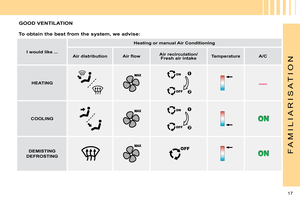 14
14 15
15 16
16 17
17 18
18 19
19 20
20 21
21 22
22 23
23 24
24 25
25 26
26 27
27 28
28 29
29 30
30 31
31 32
32 33
33 34
34 35
35 36
36 37
37 38
38 39
39 40
40 41
41 42
42 43
43 44
44 45
45 46
46 47
47 48
48 49
49 50
50 51
51 52
52 53
53 54
54 55
55 56
56 57
57 58
58 59
59 60
60 61
61 62
62 63
63 64
64 65
65 66
66 67
67 68
68 69
69 70
70 71
71 72
72 73
73 74
74 75
75 76
76 77
77 78
78 79
79 80
80 81
81 82
82 83
83 84
84 85
85 86
86 87
87 88
88 89
89 90
90 91
91 92
92 93
93 94
94 95
95 96
96 97
97 98
98 99
99 100
100 101
101 102
102 103
103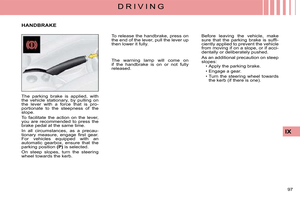 104
104 105
105 106
106 107
107 108
108 109
109 110
110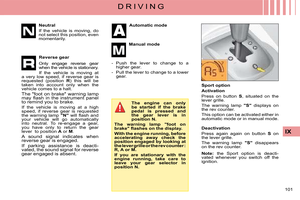 111
111 112
112 113
113 114
114 115
115 116
116 117
117 118
118 119
119 120
120 121
121 122
122 123
123 124
124 125
125 126
126 127
127 128
128 129
129 130
130 131
131 132
132 133
133 134
134 135
135 136
136 137
137 138
138 139
139 140
140 141
141 142
142 143
143 144
144 145
145 146
146 147
147 148
148 149
149 150
150 151
151 152
152 153
153 154
154 155
155 156
156 157
157 158
158 159
159 160
160 161
161 162
162 163
163 164
164 165
165 166
166 167
167 168
168 169
169 170
170 171
171 172
172 173
173 174
174 175
175 176
176 177
177 178
178 179
179 180
180 181
181 182
182 183
183 184
184 185
185 186
186 187
187 188
188 189
189 190
190 191
191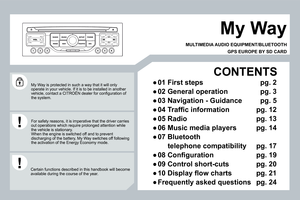 192
192 193
193 194
194 195
195 196
196 197
197 198
198 199
199 200
200 201
201 202
202 203
203 204
204 205
205 206
206 207
207 208
208 209
209 210
210 211
211 212
212 213
213 214
214 215
215 216
216 217
217 218
218 219
219 220
220 221
221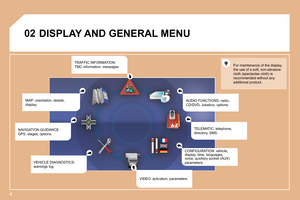 222
222 223
223 224
224 225
225 226
226 227
227 228
228 229
229 230
230 231
231 232
232 233
233 234
234 235
235 236
236 237
237 238
238 239
239 240
240 241
241 242
242 243
243 244
244 245
245 246
246 247
247 248
248 249
249 250
250 251
251 252
252 253
253 254
254 255
255 256
256






